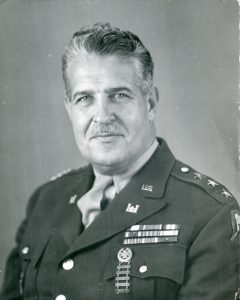Written By: Matthew J. Seelinger

While the origins of artillery—the “King of Battle”—date back to the Middle Ages, true field artillery came about during the early modern period, when military innovators like King Gustavus Adolphus of Sweden developed lightweight guns and carriages that allowed artillery to be quickly transported around the battlefield. This revolutionary development allowed armies to quickly mass heavy firepower wherever it was needed on the field of battle and forever changed warfare.

The U.S. Army’s Field Artillery branch was born on 17 November 1775 when the Continental Congress elected Henry Knox “Colonel of the Regiment of Artillery.” During the Revolutionary War, Knox’s artillery provided fire support for General George Washington’s Main Army in numerous battles, including Trenton, Princeton, Brandywine, Germantown, Monmouth, and Yorktown. Knox would later succeed Washington as the Army’s senior officer and serve as the nation’s first Secretary of War. While the Field Artillery played a relatively minor role in the early nation’s wars against Indians, it served well in the War of 1812 and later played a major role in the Mexican War.

During that conflict, the Army’s “flying artillery,” mobile light guns mounted on horse carriages with the gun crews riding into battle on horses, devastated formations of Mexican infantry and cavalry at the Battle of Palo Alto and other engagements. A number of junior officers who served in the Field Artillery, including Thomas J. “Stonewall” Jackson and Braxton Bragg, would later rise to prominence in the Civil War. New developments in artillery technology, such as rifled guns, gave Field Artillery a prominent role in the Civil War. Artillery was important to the outcome of a number of battles, including Malvern Hill, Fredericksburg, Gettysburg, Cold Harbor, and several other engagements. After the Civil War, developments in American artillery lagged in comparison to European armies to the point that the American Expeditionary Forces of World War I were forced to rely on French 75mm guns and 155mm howitzers.

In World War II, however, the U.S. Army possessed excellent American-made artillery pieces; moreover, the Army could mass fires unlike any other belligerant in the war, with devastating effects, leading General George S. Patton to declare, “I do not have to tell you who won the war. You know our artillery did.” American Field Artillery continued to play an important role in post-World War II conflicts such as the Korean, Vietnam, and Persian Gulf Wars. In addition, Field Artillery acquired new weapons during the Cold War, such as nuclear artillery rounds and nuclear-capable rockets and missiles. By the mid-1990s, however, these had been all but eliminated from the Army’s arsenal. Field Artillery continues to evolve, especially as the nature of warfare has changed in recent years. New artillery systems, such as the Excalibur Precision Guided Artillery Round and the Guided Multiple Launch Rocket System have increased accuracy and will guarantee a prominent role for the Field Artillery in future conflicts.



